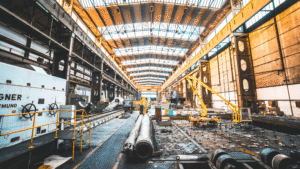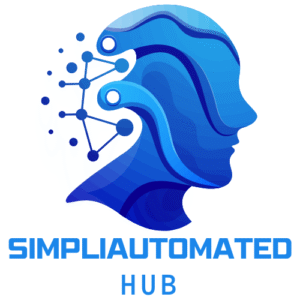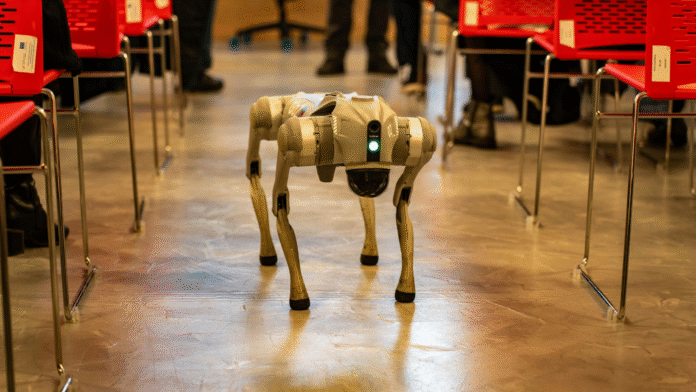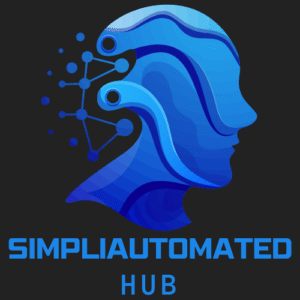Ever catch yourself wondering if your automation is actually smart—or if it’s just moving digital boxes from one place to another?
Picture this: You launch a workflow expecting autopilot efficiency, only to have it break over a single unexpected input—a typo, a new file format, or a customer quirk the system just can’t handle.
You’re not alone. Over 70% of organizations still rely on traditional, rule-based automation—yet investment in AI-driven solutions is accelerating at six times that pace as businesses chase adaptability and real intelligence.
So, how do you know when to stick with tried-and-true scripts, and when it’s time to trust your processes to machine learning? If your goal is to boost efficiency, scale with confidence, and stay ahead of evolving customer needs, the answer isn’t always obvious or one-size-fits-all.
This guide empowers you to make the smartest call, whether you’re a marketer automating campaigns, a business owner eyeing new tools, or a technical pro dreaming up next-gen workflows.
You’ll discover:
- What truly separates AI from traditional automation—beyond the buzzwords
- Real-world scenarios where each approach shines (and where they fail)
- Trade-offs in cost, speed, setup, and scalability that impact your ROI
- Actionable steps to align your strategy with the pace of tech change
Think of it as choosing between a precision watch and a smartwatch: one is built for reliability, the other for adaptability and learning.
Ready for clarity that helps you automate with intention—not just for show?
Up next: let’s break down how automation’s core mechanics have evolved, and why that should shape your next big tech decision.
Defining Automation: Traditional vs. AI Approaches
What exactly do we mean by “automation” in today’s business world? At its core, automation is about using technology to perform tasks with minimal human input—think of it as handing over the repetitive or complex parts of your workflow to a digital helper.

For decades, companies have turned to rule-based systems, like scripts or macros, to do just that. But now, a new wave—powered by AI—promises a smarter, more adaptive approach.
“Choosing the right automation is like picking between a player piano and a jazz improviser—one follows the notes, the other adapts to the crowd.”
Traditional Automation: Foundations and Mechanics
Traditional automation runs on a simple principle: explicit, pre-defined instructions.
Picture this:
- Scripts that log invoices to your accounting system each morning
- Macros that clean up spreadsheets at the tap of a key
- Workflow engines scheduling your backups at 2 AM, every night
These classic tools excel at:
- Predictability: They do exactly what you tell them, every time
- Consistency: Results don’t vary—perfect for audits or compliance
- Ease of setup: Fast to launch for well-defined, repetitive tasks
But here’s where things get sticky: Even a single unexpected input can throw these systems off. Change the file format, or tweak a rule, and it’s back to manual fixes or code edits.
AI Automation: Adaptive Intelligence in Action
This is where AI automation changes the game.
Instead of following static rules, AI-powered systems use:
- Machine learning to uncover patterns in massive datasets
- Natural language processing (NLP) to make sense of everyday language
- Computer vision to “see” and categorize images or video
Imagine a chatbot that improves as it learns every customer question, or fraud detection that adjusts as scammers change tactics. These systems:
- Learn from new data, getting better without manual tweaks
- Handle unstructured info—like emails, videos, or random typos
- Adapt and predict, making context-aware choices in real time
There’s a learning curve here: Success demands quality data, upfront training, and smart integration. But the payoff? A process that gets smarter over time instead of standing still.
When you picture your workflow, ask: “Do I just need someone to follow the steps, or do I need a teammate who can improvise and grow?”
—
Choosing between traditional and AI automation hinges on whether you need unflagging reliability or evolving adaptability. Knowing this distinction upfront means you’ll invest in solutions that actually fit your goals—and avoid automating yourself into a corner.
Core Differences Between Traditional and AI Automation
When you compare traditional automation to AI automation, you’re really looking at two different worlds—one rooted in unwavering rules, the other in adaptive intelligence.
Each approach has a sweet spot, and understanding their core differences is your shortcut to smarter workflow decisions.
Decision-Making Capabilities
Traditional automation acts like a recipe-following cook: it executes each step precisely as written, no questions asked.
- Explicit rules drive every decision, so outcomes are predictable and repeatable.
- If an unexpected ingredient pops up—or the recipe changes—it’s stumped and stops working until you intervene.
AI automation is more like a creative chef who tastes, adjusts, and innovates on the fly.
- These systems evaluate real-world context, weigh different options, and make autonomous decisions based on live data.
- You’ll find AI powering tools like intelligent chatbots or fraud detection that respond uniquely every time.
“Traditional automation works by the book; AI automation writes its own playbook as it learns.”
Flexibility and Adaptability
Most traditional automation breaks when your data is messy or your processes change.
- Manual updates are needed for every twist—think editing dozens of rules or scripts when business needs grow.
- These workflows excel in environments where nothing ever surprises you: perfect for repetitive, structured tasks.
AI automation adapts like a pro athlete reading the field.
- It handles unstructured data—from messy emails to images—and thrives amid shifting requirements.
- Maintenance is lighter: AI can self-improve and scale up without hitting a wall when workflows evolve.
“AI automation is built for the unknown, while traditional automation only handles the known.”
Learning and Continuous Improvement
Traditional automation is static—it only improves when you (or a developer) manually tweak the instructions.
- Every upgrade means another round of rewrites, testing, and deployment.
By contrast, AI automation learns in real time.
- Imagine a spam filter that gets better with every email flagged, or a personalized recommendation engine that fine-tunes itself as more users interact.
“Picture this: with AI, your workflows don’t just keep up—they get smarter with every task completed.”
—
In a sentence: Traditional automation is about dependability and speed for simple, repeatable work; AI automation brings learning, adaptability, and creative problem-solving for complex, ever-changing environments.
When workflows are predictable, stick with rule-based bots; when outcomes depend on context or data interpretation, it’s time to let AI take the wheel.
Suitability by Use Case: When to Choose Traditional vs. AI Automation
Picture this: you’re staring down a workload mountain, trying to decide if a trusty rules-based script or an adaptive AI assistant is the best way to automate the climb.

Knowing which fit is better for the job can make all the difference in speed, cost, and results—especially when every minute and dollar counts.
Ideal Applications for Traditional Automation
Traditional automation is the go-to when your needs are clear, repeatable, and leave zero room for surprises.
If your workflows look like a checklist that rarely changes, this is your lane.
Best fits include:
- Highly repetitive, structured, or rule-based tasks
- Processes requiring speed, consistency, and accuracy
- Scenarios demanding compliance or rigid predictability
Common examples that get huge gains from traditional automation:
- Invoice generation—pulling the same fields into a PDF 500 times
- Scheduled data backups—same files, same timing, every night
- Batch file processing—think standardized form letters or payroll
As one popular phrase goes: “Traditional automation shines when the path never changes.”
Where AI Automation Excels
When your business throws curveballs—unstructured data, shifting rules, or the need to get personal—it’s time for AI automation.
AI thrives on complexity, learning from data to spot patterns and make smart calls on the fly.
Perfect scenarios for AI-driven solutions:
- Interpreting unstructured data (text, images, video)
- Dynamic or frequently changing environments
- Complex decision-making, personalized experiences, or outcome optimization
Picture a support chatbot that gets smarter with each question, or a marketing campaign that tailors emails based on recent customer activity.
AI-driven automation is especially crucial for:
- Intelligent customer routing—think call centers triaging customers instantly
- Predictive analytics—anticipating maintenance needs before anything fails
- Dynamic pricing—adapting offers to real-time market shifts
If your process involves more detective work than simple box-checking, AI is your power tool.
Quick Ways to Spot the Right Fit
Here’s a handy way to decide:
- If “same in, same out” is your mantra: Traditional automation is your best bet.
- If every day brings new data or decisions: AI automation delivers the adaptability you need.
A memorable stat: Over 70% of organizations still rely on basic automation for standard operations, but investment in AI-powered automation is growing 6x faster (Gartner, 2023)—a clear sign that more businesses are handling unpredictable, complex tasks.
Key takeaway: Match the complexity and volatility of your workflow to the right automation type—consistency loves traditional automation, agility needs AI.
Efficiency, Cost, and Scalability: Choosing for Maximum ROI
When it comes to automation, ROI is more than just a price tag—it’s how quickly you see results, how smoothly you can scale, and how much teams have to sweat to keep things moving.
Picture this: you’re deciding between something you can spin up with a few scripts or macros in an afternoon versus a system that “thinks” for itself but takes weeks of prep.
Implementation Complexity and Speed
Traditional automation gets you up and running fast. Just define the rules, set the schedule, and you’re processing invoices or running backups with minimal fuss.
But AI automation comes with a setup curve:
- Requires more expertise: You’ll need data engineers or integration specialists, not just a savvy admin.
- Longer timelines: Training models, integrating AI, and prepping data can take weeks to months.
- More change management: Expect deeper process impacts and the need for internal training.
Still—“Set it and forget it” only truly applies to repetitive tasks that never change. Sharable insight: “With traditional automation, you’re building a sturdy engine; with AI, you’re training a self-driving car—and that needs directions and ongoing fuel.”
Cost Considerations
Traditional automation keeps costs predictable and lower at the start:
- Upfront costs: Often just software licenses and a developer’s time (average: $1,000-$10,000 per workflow).
- Ongoing costs: Maintenance, occasional manual updates, minimal resource drain.
AI automation, on the other hand, raises the stakes:
- Upfront costs: Data collection, algorithm development, vendor fees (can range from $10,000 to $250,000+ for complex AI projects).
- Ongoing costs: Model retraining, cloud hosting, specialized support, and continuous integration.
Hidden costs?
- AI: Data cleansing, security, compliance oversight.
- Traditional: Manual adjustments every time the process changes.
Ongoing Efficiency and Scalability
Once you’re live, traditional automation is a “workhorse”—efficient for repetitive jobs but doesn’t scale well with business growth or process shifts. Every tweak demands manual reprogramming.
AI automation? It’s built for evolution:
- Self-improves as new data comes in, raising efficiency over time.
- Scales with your business: Add data, new workflows, and AI adapts.
- Handles unstructured, dynamic workloads—think dynamic pricing or 24/7 customer support without extra headcount.
“Traditional automation is perfect for ‘if-this-then-that’ scenarios. But, if your business pivots or grows, AI can leap with you—traditional automation usually can’t.”
Whether you’re running a lean team or prepping for hypergrowth, matching the right automation to your current and future needs is the gold standard for ROI. Prioritize speed and cost when your workflow is stable; invest in AI when adaptability, scale, or advanced insight could set you ahead.
Strategic Implications: Future-Proofing Your Automation Investments
Thinking ahead isn’t just smart—it’s essential if you want your automation to keep pace with fast-changing tech and business demands.
Future-proofing goes beyond picking software for today’s to-do list. It means investing in solutions and strategies that can adapt, scale, and flex in ways you might not even need yet.
Navigating Organizational Impact
Rolling out AI automation doesn’t just change your workflows, it transforms roles and responsibilities.
Picture this: automation handles the tedious data entry, while your team upskills to focus on analysis, creativity, and decision-making. But, you’ll need:
- Continuous training to keep skills aligned with new tech
- Change management to smooth out bumps in work culture
- Integration plans that ensure your new AI tools play nice with older, traditional systems
A recent survey found that over 60% of organizations cite workforce reskilling as a top barrier—but also a top ROI driver—for AI adoption.
Adapting to Emerging Trends and Industry Shifts
Trends like AI as a service, hybrid automation models, and drag-and-drop, no-code solutions are reshaping what’s possible.
Want automation that won’t collect dust after year one? Build your strategy around:
- Flexibility: Choose platforms designed for plug-and-play AI modules
- Interoperability: Prioritize tools that integrate with both traditional and next-gen tech
- Iterative adoption: Start small, then evolve as new features and needs emerge
“Think of your automation stack like a set of LEGO bricks, not a glued-together model.”
Mitigating Risks and Limitations
No approach is bulletproof—traditional automation can get brittle, while AI needs data, oversight, and tuning.
Mitigate risks by:
- Starting with pilot projects and scaling up as confidence grows
- Empowering staff to own and iterate on automation solutions
- Regularly reviewing compliance and ethical use, especially where data privacy or decision bias could arise
Watch for “black-box” AI that’s hard to explain to compliance teams—transparency matters.
Embracing automation isn’t just a tech decision—it’s a culture shift. The investments that pay back the most are those that let you surf the next wave, not just stay afloat. Building for flexibility, integration, and learning will keep your automation ahead of the curve—and your business ready for what’s next.
Conclusion
When you’re choosing between AI automation and traditional automation, you’re not just picking a tool—you’re setting the stage for how your business adapts, scales, and thrives in an increasingly digital world.
It’s about finding the right fit: leveraging rule-based precision where you need reliability, and harnessing AI’s adaptability where complexity and fast change are the norm.
Here’s how you can put these insights to work starting today:
- Map your key workflows and spotlight which ones are simple, structured, and repetitive—automation goldmines that don’t need AI complexity.
- Identify pain points where your current systems break down, especially when data is messy or customer needs constantly change—prime territory for an AI upgrade.
- Start small and experiment: Launch a micro-pilot with AI automation on one high-impact process while keeping legacy automations humming where they excel.
- Invest in upskilling your team, empowering them to master both new AI solutions and classic automation tools—future-proofing your workforce is non-negotiable.
- Review integration options to ensure new tech plays well with what’s already working; real value comes from systems talking to each other seamlessly.
Ready to take action?
- Audit your current automations—what’s rock solid, what’s brittle?
- Run a “complexity scan” on your toughest processes and shortlist candidates for AI-driven improvement.
- Open a conversation with your team about how automation can free up time for more impactful work.
The most forward-thinking organizations aren’t just adopting automation—they’re blending the best of both worlds to drive greater efficiency, adaptability, and growth.
No matter where you start, the goal is simple: build workflows that can flex, learn, and scale with you—so your business stays ahead, no matter how the landscape shifts.
“Automation isn’t about replacing people; it’s about freeing up your brightest minds to solve tomorrow’s challenges. The smartest moves you make today will set the pace for your success tomorrow.”









